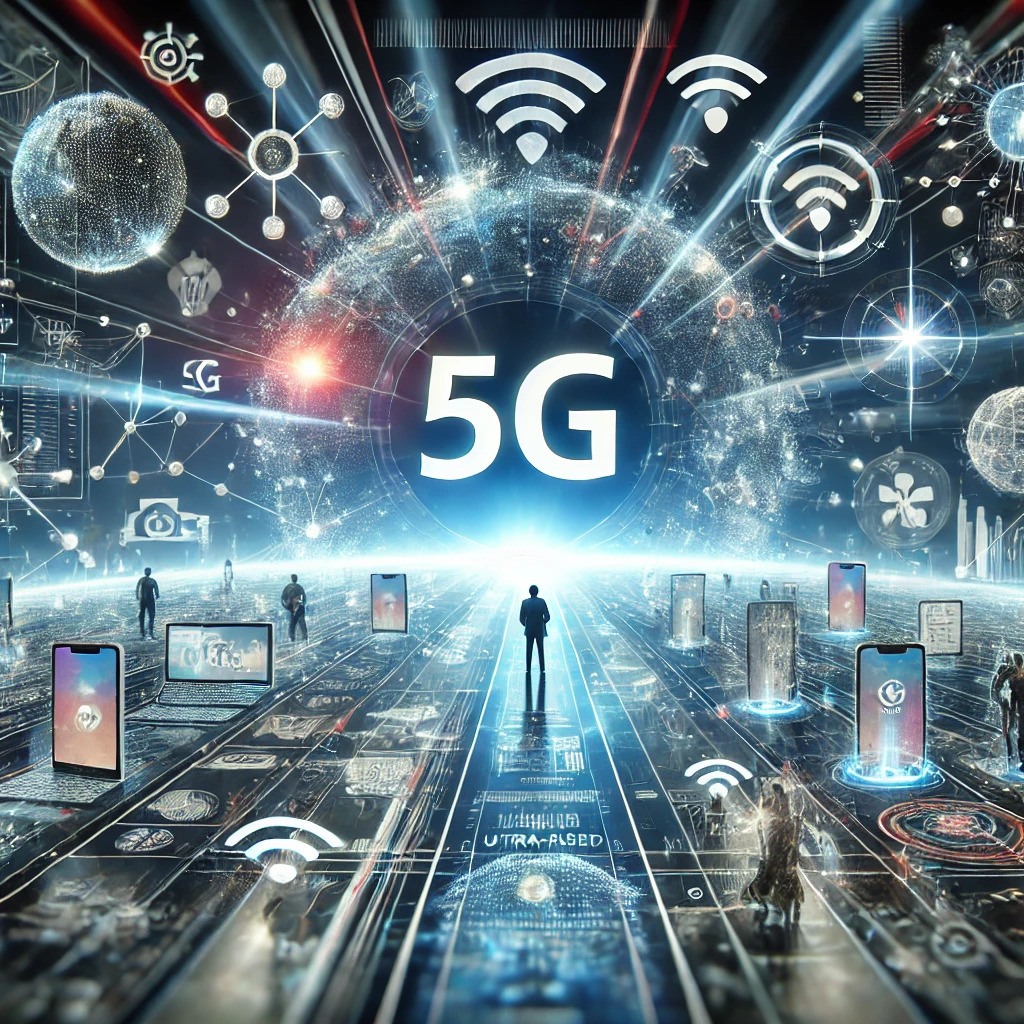
The rapid evolution of 5G technology is set to redefine the way businesses approach digital marketing, ushering in a new era of connectivity and opportunities. With its ultra-fast speeds, lower latency, and increased capacity, 5G in digital marketing is transforming how companies engage with their audiences, enabling them to deliver richer, more dynamic experiences. As 5G networks continue to expand, its impact on digital strategies will be profound, influencing everything from real-time data collection to the delivery of immersive content.
The Rise of 5G: A Game Changer for Digital Connectivity
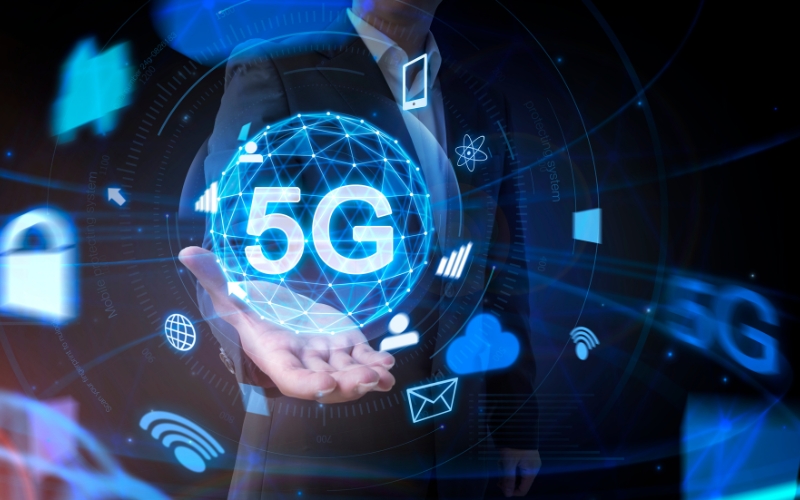
The rise of 5G technology is transforming the digital landscape, making it a game-changer for connectivity. With its ultra-fast speeds, lower latency, and enhanced network capacity, 5G in digital marketing is set to elevate how businesses connect with customers. As 5G networks roll out globally, it promises to revolutionize digital infrastructure, providing more efficient and seamless internet access for both marketers and consumers.
One of the most significant advancements of 5G technology is its speed. 5G networks can deliver download speeds that are up to 100 times faster than 4G, enabling content to load in an instant. For digital marketers, this means they can offer richer, more engaging content without worrying about slow load times or buffering. Video ads, live streaming, and interactive elements can be accessed without interruptions, enhancing the overall customer experience.
In addition to speed, 5G brings remarkable improvements in latency. Latency refers to the delay between sending and receiving data, and with 5G, this delay is drastically reduced. For digital marketing, lower latency opens up opportunities for real-time customer interactions, enabling instant communication with customers through chatbots or live support. This is particularly beneficial for time-sensitive promotions or events where marketers need to engage with users promptly.
Another key benefit of 5G in digital marketing is its ability to support a massive number of connected devices. The growing use of Internet of Things (IoT) devices in homes, businesses, and even personal gadgets creates an ecosystem where marketers can collect more data about consumer preferences and behaviors. 5G’s high network capacity allows for smooth and efficient communication between these devices, providing real-time insights into consumer actions. This can be leveraged to create more targeted and personalized marketing campaigns.
The impact of 5G in digital marketing is profound, allowing businesses to enhance their strategies and cater to an increasingly digital-savvy consumer base. Faster speeds, lower latency, and better connectivity enable marketers to engage with customers more effectively, pushing the boundaries of creativity and consumer interaction. As 5G continues to roll out, it will undoubtedly shape the future of digital marketing in unprecedented ways, offering new possibilities for innovation and engagement.
Enhanced Mobile Experiences: How 5G Transforms Consumer Engagement
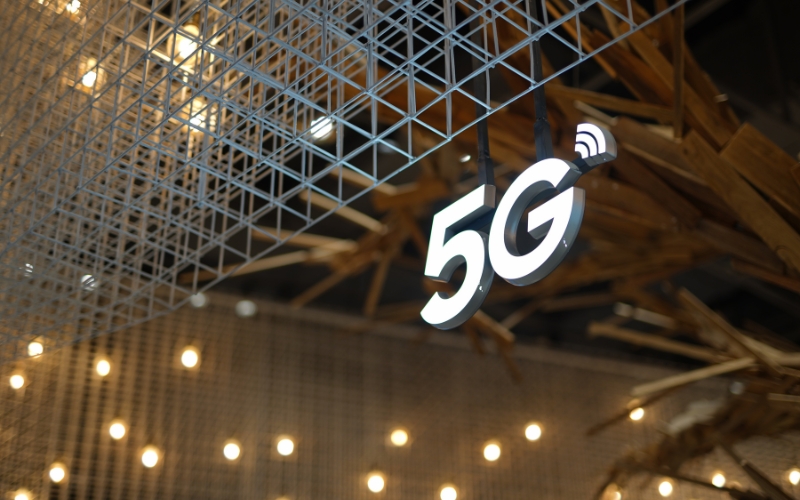
The advent of 5G technology is significantly enhancing mobile experiences, and this transformation is especially crucial for digital marketing. With its ability to provide ultra-fast speeds and reduced latency, 5G in digital marketing is enabling businesses to offer more immersive, seamless, and interactive mobile experiences that were previously unimaginable.
One of the most profound impacts of 5G in digital marketing is its ability to deliver high-quality video content at unprecedented speeds. Mobile users can now stream 4K and even 8K videos without buffering, enhancing their engagement with content. This is a game-changer for marketers, as video has become one of the most powerful tools for capturing audience attention. With 5G, marketers can integrate live streaming, interactive videos, and dynamic ad formats into their campaigns, creating richer and more engaging experiences for consumers.
Moreover, 5G allows for augmented reality (AR) and virtual reality (VR) applications to thrive on mobile devices. These immersive technologies rely heavily on high-speed data transfer and low latency, both of which are made possible by 5G. Marketers can now create AR and VR experiences that allow consumers to try products virtually, interact with 3D advertisements, or explore immersive brand stories—all in real-time. This can dramatically enhance consumer engagement, as it offers personalized, interactive experiences that go beyond traditional static ads.
In addition to enhanced video and AR/VR capabilities, 5G in digital marketing also paves the way for more interactive and responsive advertising formats. For instance, consumers can engage with ads in real-time, tapping into live promotions or offers while they watch videos or browse through mobile apps. This instant connection between consumers and brands drives higher engagement and conversion rates, as users can act immediately on the content they are interacting with.
Furthermore, 5G enables marketers to create personalized experiences based on real-time data from consumers’ mobile behaviors. With 5G’s improved speed and connectivity, businesses can collect and analyze data faster than ever before, allowing for more tailored advertising, which increases the relevance of marketing campaigns and deepens consumer connections.
The Role of 5G in Data-Driven Marketing and Personalization
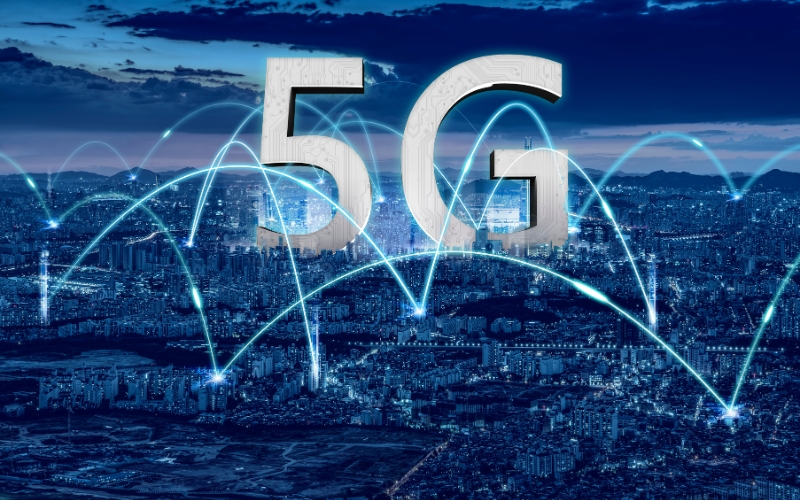
The role of 5G in data-driven marketing and personalization is a crucial aspect of how businesses will adapt and thrive in the increasingly digital marketplace. With 5G technology enabling faster data transmission, marketers can collect and analyze data in real-time, leading to more accurate insights and the ability to create highly personalized marketing strategies.
One of the main advantages of 5G in digital marketing is its ability to significantly speed up data transmission. This reduction in latency allows businesses to gather real-time information about consumer behaviors, preferences, and interactions. In the past, data collection was often limited by slow internet speeds or processing delays. With 5G, marketers can track consumer actions as they happen, whether it’s browsing patterns, purchase behaviors, or engagement with digital content. This immediate access to data enables businesses to act quickly, adjusting campaigns and offers based on the most current information available.
Moreover, the ability to process large volumes of data at lightning speed is another benefit of 5G. As consumers interact with digital platforms, they generate a massive amount of data. 5G in digital marketing can handle these large data sets more efficiently, allowing for deeper analysis and segmentation. Marketers can categorize consumers with greater precision, tailoring their messaging and offers to specific groups based on interests, demographics, or past behaviors. This segmentation ensures that marketing efforts are not only more relevant but also more effective, leading to higher conversion rates and better customer retention.
Personalization is enhanced with 5G’s capabilities, as marketers can deliver highly targeted content in real-time. With faster data transmission, brands can create personalized experiences across various touchpoints, including websites, mobile apps, and social media platforms. For instance, as a consumer browses a website, 5G allows for dynamic content adjustments based on their preferences, creating a more engaging and customized experience. This level of personalization was previously challenging to achieve without the real-time processing power that 5G provides.
Leveraging 5G for Interactive and Immersive Technologies in Advertising
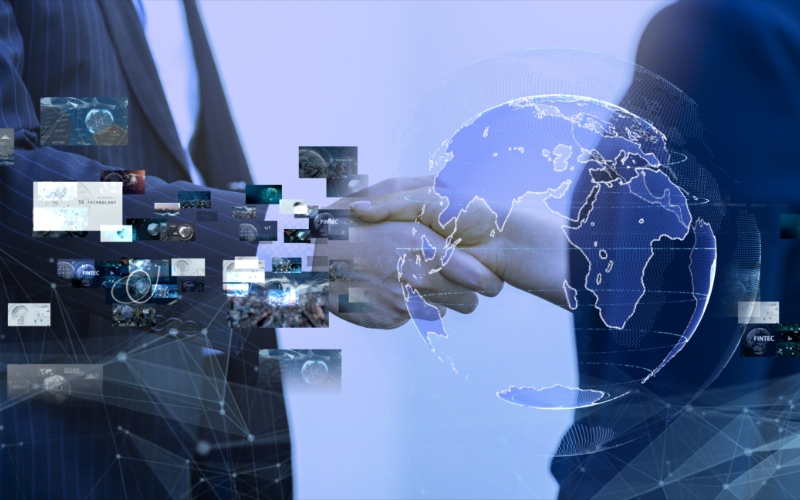
Leveraging 5G in digital marketing opens up new possibilities for interactive and immersive technologies like virtual reality (VR), augmented reality (AR), and mixed reality (MR). These technologies have already begun to make waves in digital marketing, but with the enhanced capabilities of 5G networks, they are poised to transform how brands interact with consumers in innovative and impactful ways.
5G in digital marketing significantly improves the experience of VR and AR. Virtual reality, which immerses users in a completely digital environment, and augmented reality, which overlays digital elements onto the real world, both demand high-speed data transfer and low latency. Traditional networks often struggle to support the real-time rendering and interactions required for seamless VR and AR experiences. However, with the ultra-fast speeds and minimal delay provided by 5G, these technologies can operate smoothly, even on mobile devices. For marketers, this means they can deliver highly engaging and interactive experiences without the technological constraints that previously limited their potential.
For example, in the fashion industry, consumers could use augmented reality through their smartphones to try on clothes virtually. With 5G, the experience becomes incredibly smooth and realistic, allowing for more engaging customer interactions and reducing the uncertainty associated with online shopping. Similarly, with VR, users can step into a virtual store, explore different products, and interact with items as if they were physically there, all in real-time. This level of immersion helps build deeper connections between consumers and brands, making shopping more experiential and personalized.
Mixed reality, which combines both VR and AR elements, is another area where 5G in digital marketing can shine. This technology allows users to interact with digital content while remaining aware of their real-world surroundings. With the faster data speeds and lower latency of 5G, MR experiences can be more responsive and interactive, providing consumers with immersive brand experiences that blur the lines between the digital and physical worlds.
The Future of 5G-Enabled IoT Marketing: Connecting the Digital World
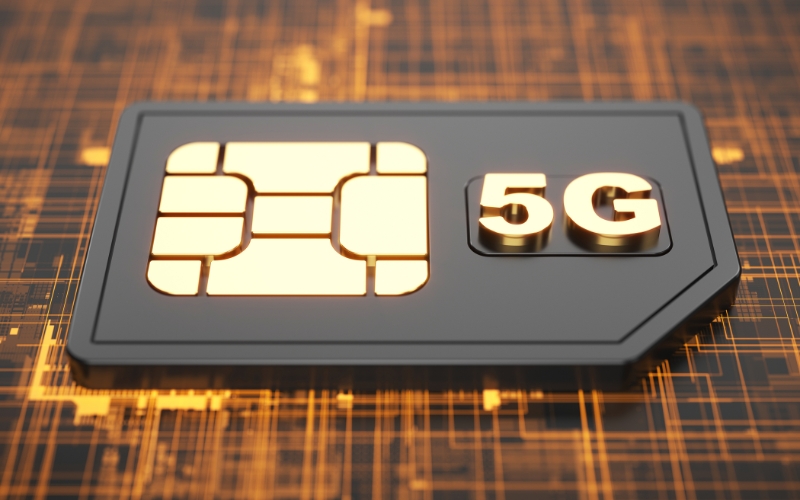
The future of 5G-enabled IoT marketing is an exciting prospect that will transform how businesses interact with consumers and how marketers collect valuable insights. The Internet of Things (IoT) refers to the network of interconnected devices that communicate with each other over the internet, and with the arrival of 5G in digital marketing, this network will become more efficient, responsive, and far-reaching than ever before.
One of the most significant advantages of integrating IoT devices with 5G technology is the vastly improved connectivity and speed. 5G’s high-speed, low-latency network allows IoT devices to communicate with each other in real-time, creating an ecosystem where marketers can gather and analyze data faster and more efficiently. With 5G’s ability to handle large volumes of data from multiple connected devices, businesses can track consumer behaviors across various touchpoints, from smart home appliances to wearable tech, providing a deeper understanding of their preferences and actions.
This interconnected ecosystem will also enhance personalized marketing strategies. With the data generated by IoT devices, marketers can gain highly specific insights into consumers’ daily routines, locations, and preferences. For instance, a smart fridge can provide data about the products a consumer buys frequently, and with 5G’s speed, this data can be instantly transmitted to marketers, who can then offer personalized promotions for related items. This level of personalization goes beyond traditional data collection methods, offering real-time, contextual marketing opportunities that are highly relevant to consumers.
Moreover, the integration of 5G in digital marketing will enable the creation of smarter, more responsive customer experiences. For example, smart retail environments equipped with IoT sensors can use 5G networks to offer tailored discounts or product recommendations as consumers walk through the store. These experiences can be further enhanced by augmented reality (AR) and virtual reality (VR) technologies, which, when supported by 5G, can create immersive shopping experiences where consumers interact with products in real-time.
As the IoT ecosystem expands, the role of 5G in digital marketing will only become more critical. The combination of real-time data collection, instantaneous communication between devices, and personalized marketing will revolutionize customer insights and engagement. With the power of 5G-enabled IoT, businesses will be able to create more efficient and innovative marketing strategies, forging stronger connections with consumers and driving greater brand loyalty. The future of 5G-enabled IoT marketing is indeed a game-changer, offering endless possibilities for marketers to explore.
Conclusion:
As 5G technology continues to reshape the digital marketing landscape, businesses are seeking ways to integrate this next-generation network to enhance customer experiences. For a deeper understanding of how 5G can impact various industries and what the future holds, check out this detailed guide on the impact of 5G on digital marketing. This resource provides valuable insights into the practical applications of 5G, helping marketers prepare for the changes that lie ahead.
In conclusion, 5G in digital marketing is poised to revolutionize the industry by offering faster speeds, reduced latency, and enhanced connectivity. These advancements will not only enable businesses to deliver more personalized, immersive, and interactive experiences but also allow them to gain deeper insights into consumer behavior through real-time data. As 5G continues to shape the future of digital marketing, it will unlock new creative possibilities, driving innovation and enhancing consumer engagement in unprecedented ways.
For more details or to discuss your specific Digital Marketing requirements, visit our AI Scope Digital page.

